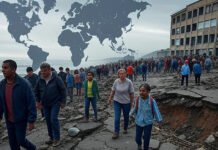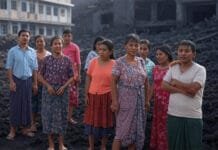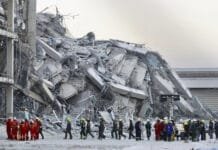🕳️ A Silent Threat Beneath Our Feet: Scientists Sound the Alarm on the “Cascadia Subduction Zone”
A terrifying seismic prediction has sent shockwaves across the globe — experts are warning of a potential Megaquake in the Pacific Northwest, one that could rival or exceed the devastation of past natural disasters.
Geologists have long feared the Cascadia Subduction Zone, a 1,000 km-long fault off the coast of the U.S. and Canada, stretching from northern California to British Columbia. Now, leading seismologists warn that this sleeping giant could awaken at any moment — with the power to kill over 300,000 people and leave millions homeless.
🌐 What Is the Megaquake?
The term “Megaquake” refers to a magnitude 9.0 or greater earthquake, the most powerful kind known to science. According to researchers, the Cascadia Subduction Zone has produced such quakes in the past — the last one striking in 1700, triggering a tsunami that reached Japan.
Experts fear history is due to repeat itself.
🚨 “Worse Than the 2004 Tsunami”
According to some geologists, if the full Cascadia fault ruptures:
A 9.0+ magnitude earthquake could shake the U.S. Pacific Northwest for 5 to 6 minutes straight.
Coastal cities like Portland, Seattle, and Vancouver could face total destruction.
A massive tsunami could strike within 15 minutes, giving little time for evacuation.
Death toll could reach or exceed 300,000, with infrastructure wiped out across multiple states and provinces.
🧠 Why the World Should Care
This isn’t just a regional U.S. issue — the ripple effects of such a disaster would be global:
Disruptions in trade and technology supply chains (especially from West Coast ports).
Economic impacts running into trillions of dollars.
A global humanitarian crisis as aid pours in from around the world.
🛑 Is the World Prepared?
According to U.S. emergency management officials, preparation is ongoing but inadequate. Many schools, hospitals, and homes in the danger zone are not earthquake-resistant. Evacuation plans are outdated or non-existent in rural areas.
Governments, from Japan to Europe, are revisiting their disaster readiness protocols in light of the dire predictions.
🧭 What Can You Do?
Stay informed: Follow updates from USGS and local emergency departments.
Know your region’s earthquake risk — Megaquakes are not limited to one fault zone.
Push for disaster preparedness in your local and national governments.
If you’re near a coastal area, learn evacuation routes and keep a go-bag ready.
🔎 Final Thought
The “Megaquake” may sound like science fiction, but experts say it’s a question of when, not if. As the world grapples with climate change and pandemic recovery, we must not forget the immense power of the Earth beneath us — and how quickly it can change everything.
















